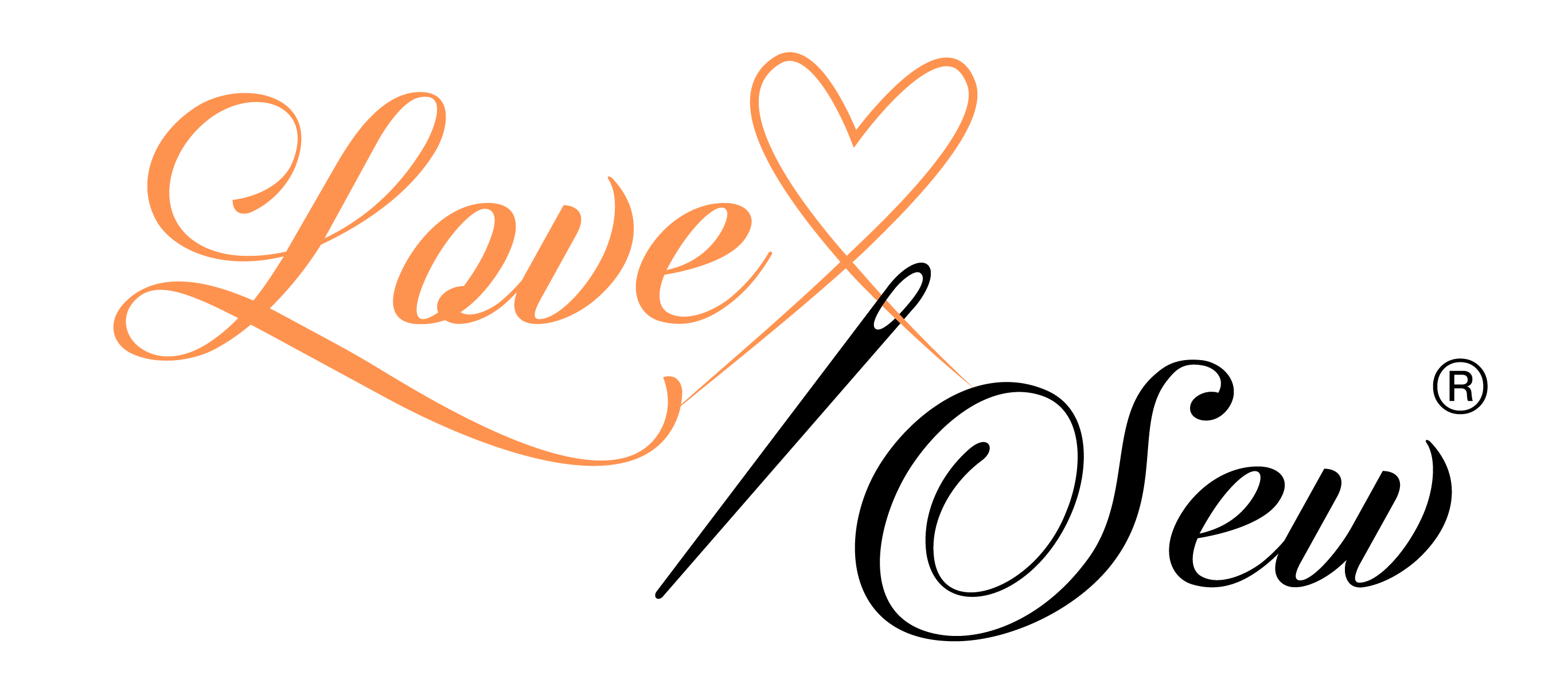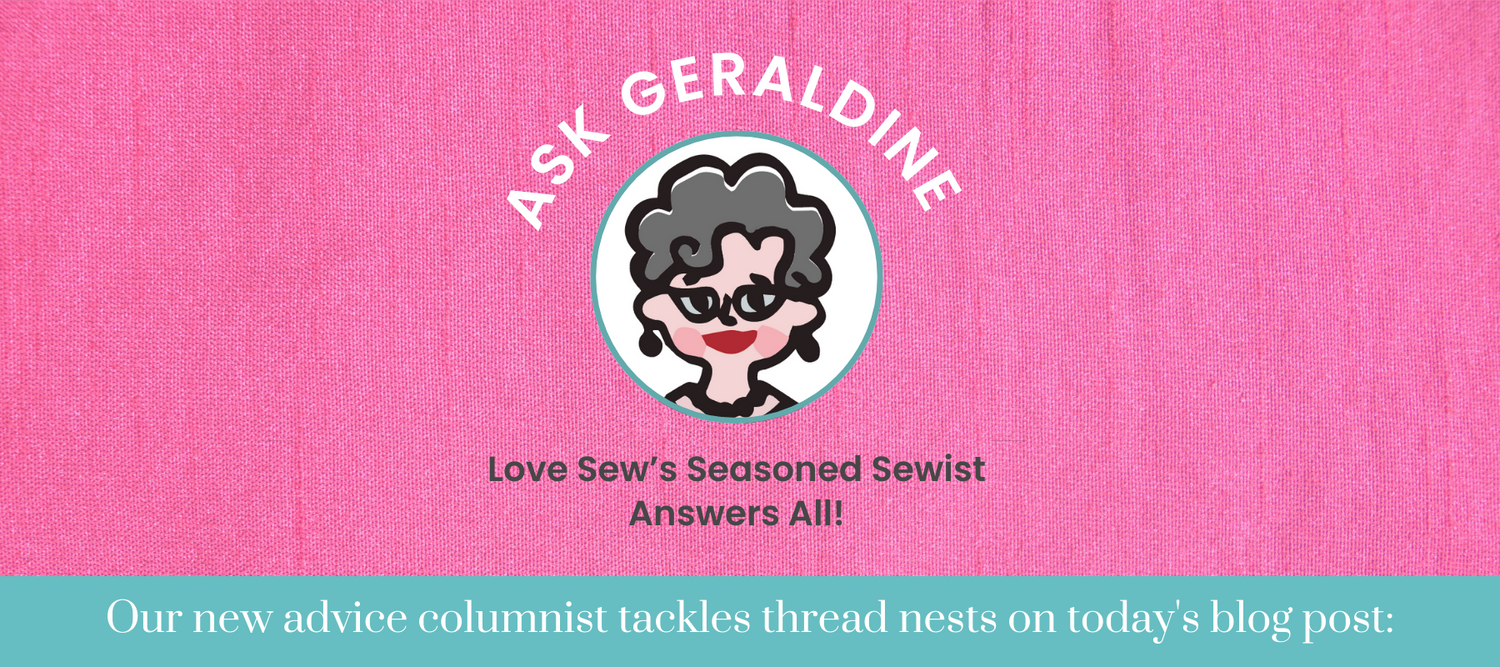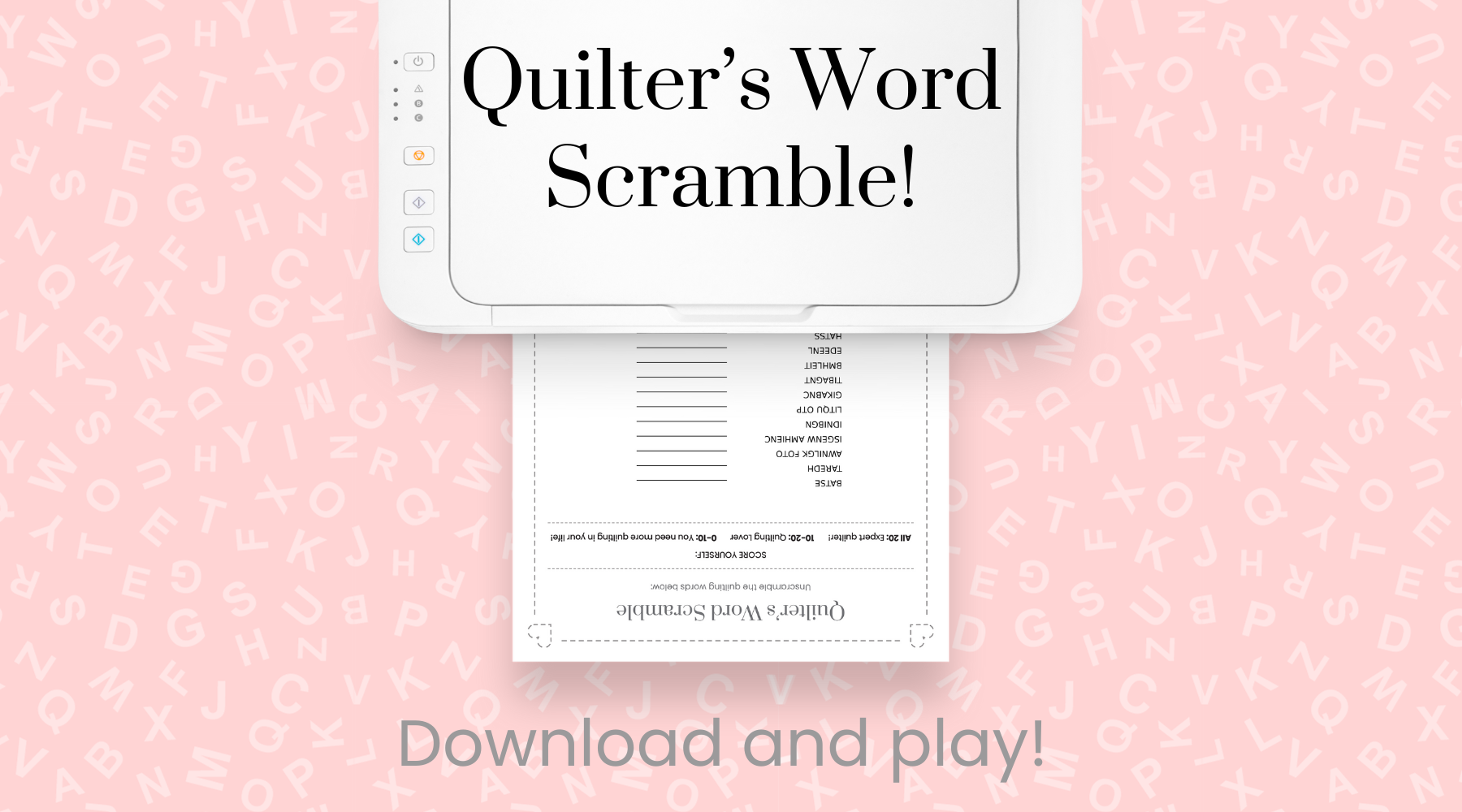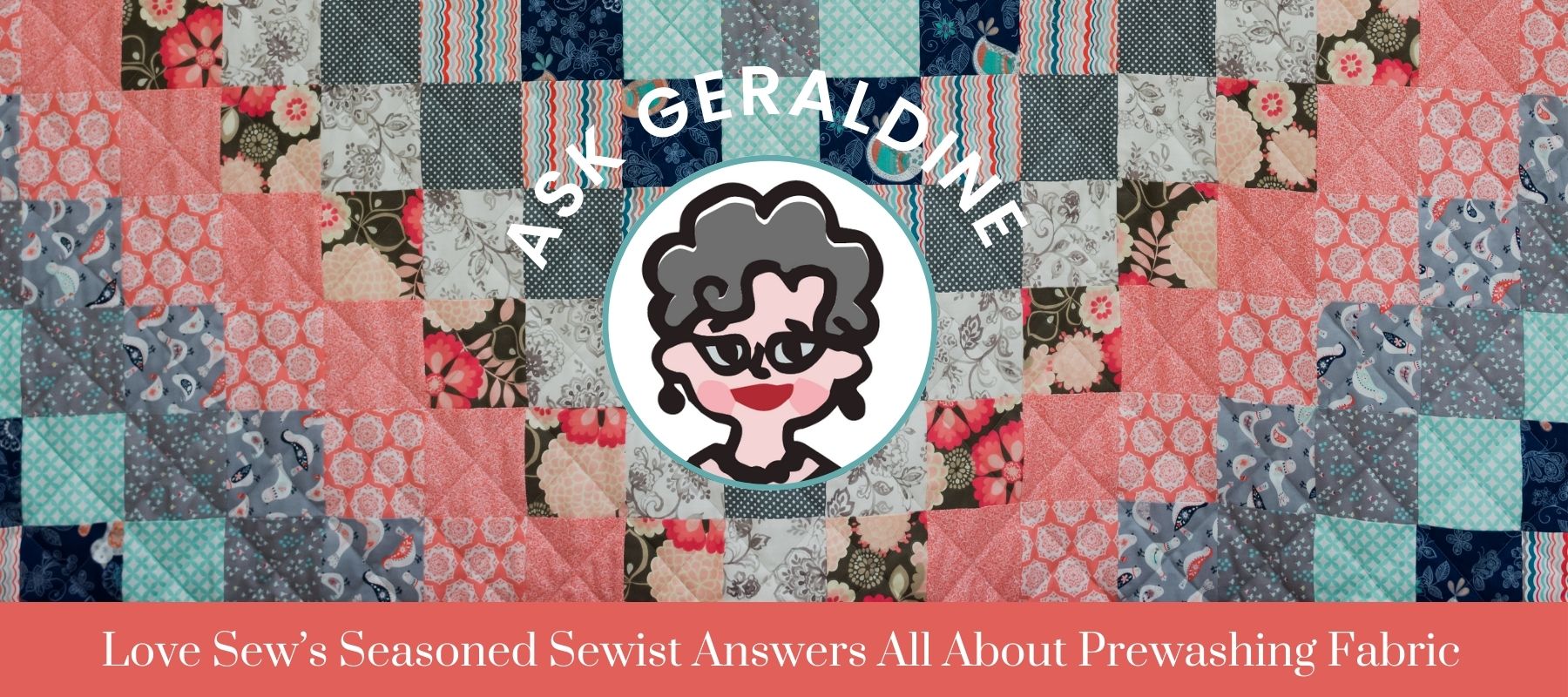Dear Geraldine,
I’m having a terrible time with thread ‘nests’ on the back of my seams. I’ve tried everything, but I can’t figure out what’s wrong with my sewing machine. What could be the problem?
-Tangled in Texas
Dear ‘Tangled in Texas,’
Few things are as exasperating as when your sewing machine starts misbehaving. If only they could speak?! Buuuut they can’t. Even if you have named your machine like I have (I’ll never tell!) they are but just a machine. Remember that your machine is just that- a machine- and machines respond to logic.
One clue is that if your thread is forming thread ‘nests’ on the backside of your stitching, it’s MOST likely to be the a problem with the top thread.
(On the other hand, if it’s the top thread that’s tangling, it’s most likely to be the bobbin thread that’s the culprit.)
Here’s a handy list of things to check, in this order, that will most likely help:
Take a deep breath and walk away from your machine for a few minutes.
You are not alone in finding problems with your sewing machine to be ONE OF LIFES’S GREATEST ANNOYANCES! I know people that have permanently given up on a sewing problem when the tangles get rough. But notice that I said annoyance, not tragedy- this can usually be diagnosed and remedied, but it requires calm :)
Completely rethread your machine.
This will fix things the vast majority of the times. If the thread is not seated properly in the series of tension discs, or a step was skipped in the threading ‘order’, your thread will revolt.
Does your needle need changing?
Been awhile since you’ve changed that thing? Is it bent, even in the slightest, or have any burrs? Put in a fresh needle. In fact, make it a practice to change your needle with every new (large) project.
Check your thread.
Is it old and brittle? Are there any snags on the plastic spool that are stopping the thread from unwinding properly? If so, swap it out for a fresh spool.
Set the top thread tension back to factory settings.
If those dials have moved (I didn’t say you did it! Could have been the cat brushing by, or your mother in law messing with you LOL) of course your stitching will be off. There will usually be a mark on the dials to indicate the default setting. Start there, and adjust conservatively.
Does your fabric need special treatment?
Some fabrics, like knits, may be more prone to snarling. Adjust your machine settings and needle type accordingly, and consider using a stabilizer if needed.
Chase away those dust bunnies!
Accumulated lint or debris in the thread path, tension discs, or bobbin area can obstruct the smooth flow of the top thread. Clean the machine thoroughly, paying attention to areas where lint tends to accumulate. Then rethread your machine through these shiny new paths. Consider getting a cover for your machine to reduce the amount of dust it collects.
If you’ve gone through this list and checked it twice and your machine is still refusing to cooperate, it’s time for a service.
Let the professionals clean your machine, look for any broken parts that need replacing and adjust that delicate tension. At least you know you did everything you can before you have to make that appointment.
Here is a free printable of this protocol to keep near your sewing machine and share with friends:
Hope this helps and happy sewing,
Geraldine
Aka: Your seasoned sewist :)





10 comments
Ann Gaskins
How do I know if my machine is a low or high shank?
Teresa
As long as I have been sewing the nests get me every now and then,thank you for the reminders!
colleen carroll
This has been most helpful! In fact I experienced this thread ‘nesting’ a short while back, after trying 6 diff wound bobbins, and teaching the end of my patience, I opened up the top cover of my ‘stand in’ machine to find the top thread had sprung loose from the top of the needle threader (does that make sense?) – took about 2 hours off of my project sewing.
Now I know my next where to, to look. Lesson learned after years of sewing😊!!!!!!!!
Sandy
On the issue of thread nests you forgot to mention “starters and Enders”! These are small (maybe 1 1/2 in square) bits of fabric where you start sewing before moving on to your real fabric and end off on another small piece . Just a short few stitches between will do it. Tip I learned from a quilter famous for chain piecing.
Cindy
I had that problem and it was because when I would wind a new bobbin the thread was winding too loosely. Worth a try to check that too.
Leave a comment
This site is protected by hCaptcha and the hCaptcha Privacy Policy and Terms of Service apply.